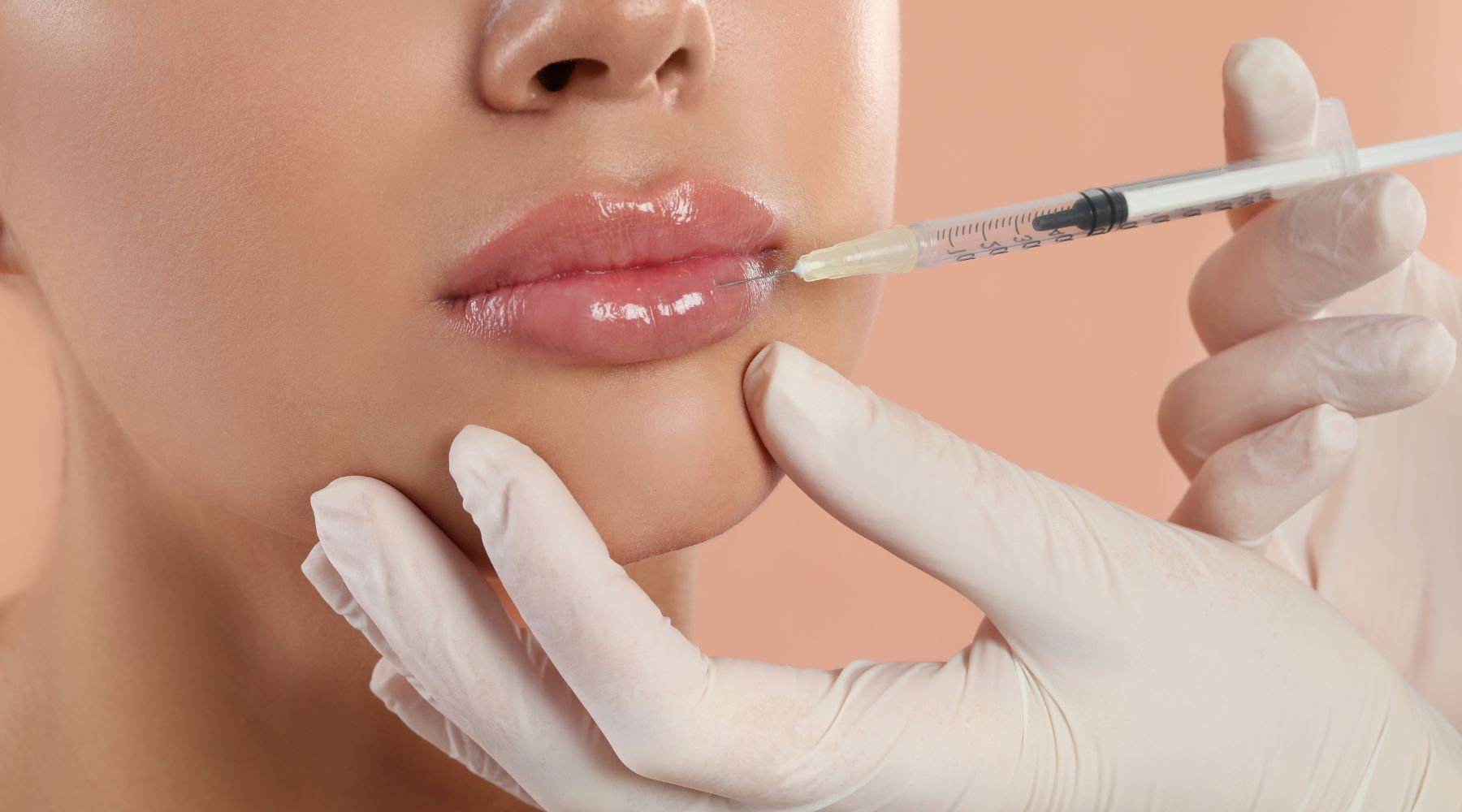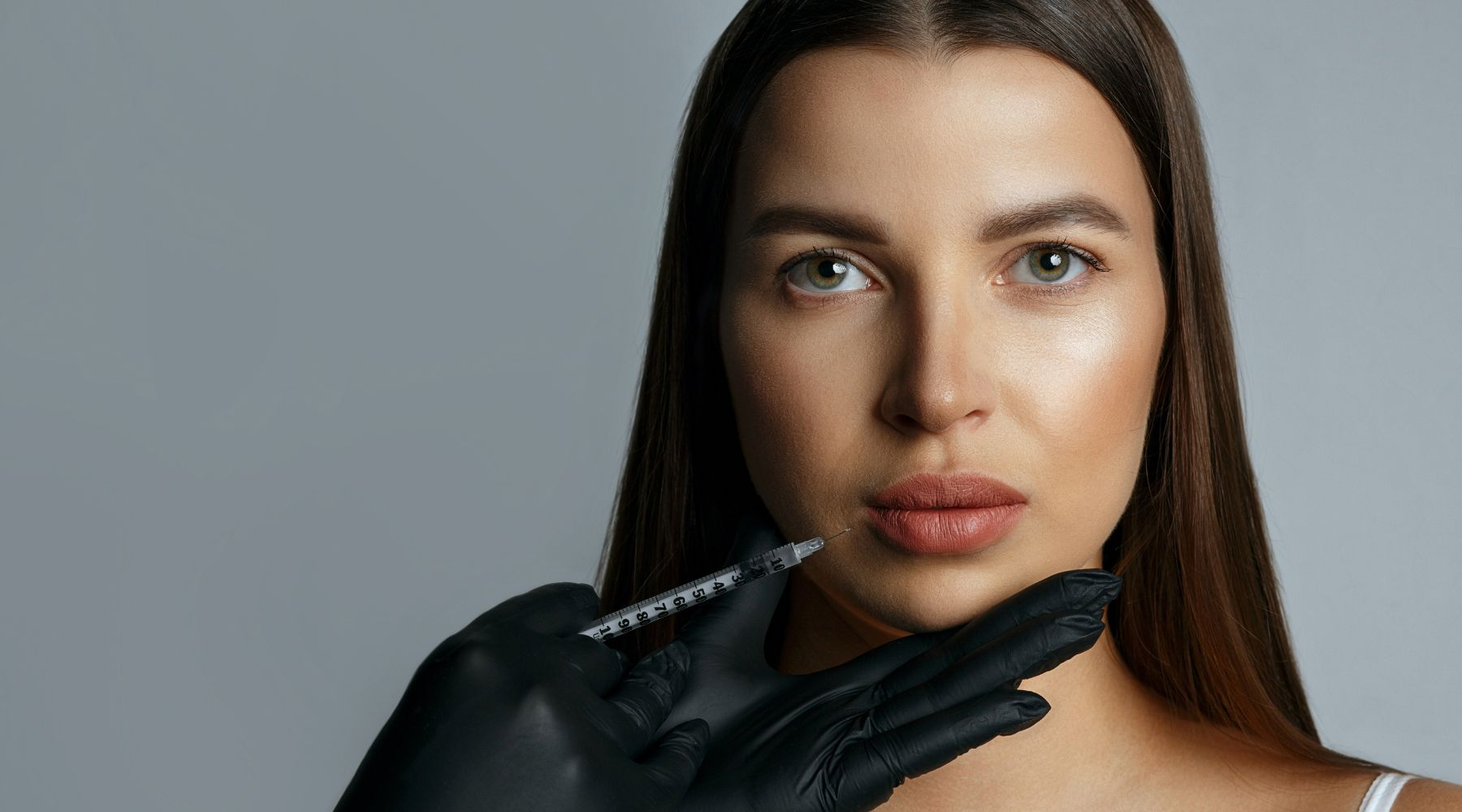Ever wondered about how long it takes to heal after getting lip fillers? You’re not alone. Many people are curious about the healing process of dermal fillers and what to expect during the recovery period.
Let’s dive into everything you need to know about the healing timeline and how to ensure a smooth recovery.
What Are Lip Fillers?
Types of Lip Fillers
Lip fillers are injectable treatments designed to add volume, shape, and structure to your lips. The most common types are hyaluronic acid fillers, which are temporary but offer a natural look.
As part of our aging process, our lips naturally lose collagen over time causing thin lips. These lip fillers offer a quick minimally invasive way to add more volume and moisture that gives a plumping effect to your lips.

Procedure for Lip Filler Treatment
Wondering how lip fillers work? A lip filler procedure involves injecting hyaluronic acid-based fillers into the lips using a fine needle to add volume, enhance shape, and smooth out fine lines, resulting in a fuller, more defined appearance.
Lip fillers can be injected into both the lower and upper lip, depending on the desired outcome. This allows for improved overall lip symmetry and volume.
Consultation
An initial consultation with a qualified practitioner is helpful to discuss your goals, assess your lips and get recommendations on the best filler type for your desired outcome.
This step is crucial for getting lip fillers as it sets realistic expectations and ensures you’re a good candidate for the procedure.
During the Procedure
Topical anesthetic is typically used for the procedure, where a numbing cream is applied to the treatment area to reduce discomfort. The practitioner then uses fine needles to inject the filler into specific areas of your lips.
The process is relatively quick, usually taking about 30 minutes, and you can see immediate results, although some swelling of top and bottom lips is expected initially.
Typical Healing Timeline: Lip Filler Swelling Stages
Immediate Aftermath
Lip fillers typically would cause your lips to be swollen and tender. This is completely expected for lip injections, but it’s normal that swelling subsides within a few hours.
Applying an ice pack can help reduce swelling and provide some relief, even on surrounding skin.
First 24 Hours
During the first 24 hours, lip swelling may peak and you might experience some bruising. Avoid any pressure on your lips, including kissing or using straws.
Keeping your head elevated while sleeping can help minimize the lip filler swelling.
Days 2-3
By the second and third day, the lip filler swelling should subside, and any bruising will begin to fade. Your lips may still feel slightly tender, but this is normal as healing continues.
Drink plenty of water and follow your practitioner’s care instructions.
First Week
Within the first week, most of the swelling and bruising should have subsided, revealing the more settled look of your enhanced lips. You can resume most of your normal activities after about a week after getting lip fillers, but it’s still wise to avoid high-intensity workouts and excessive sun exposure.
Long-Term Care
Long-term care involves regular hydration and using gentle skincare products around your lips. Avoiding excessive sun exposure and not smoking can also help maintain the results of your lip fillers.
A follow-up appointment with your practitioner can ensure that your lips stay in great shape.
Factors Affecting Healing Time & Swelling Stages
Individual Health
Individuals with robust immune systems and healthy lifestyles often recover faster. Ensure you’re eating a balanced diet and staying hydrated to support your body’s healing.
Type of Filler
The type of filler used also plays a role in the healing time. Dermal fillers using hyaluronic acid like Restylane typically have a faster recovery period compared to collagen-based fillers, which may take longer for swelling and bruising to subside.

Aftercare Practices
Proper aftercare includes avoiding strenuous activities, not applying pressure to your lips, and steering clear of extreme temperatures. This helps minimize swelling and reduces the risk of complications after lip injections.
A qualified healthcare professional should schedule any follow up appointment and recommend repeat treatments if needed.
Tips for a Smooth Healing Process
Dos and Don’ts
Do apply ice packs to reduce swelling, stay hydrated, and sleep with your head elevated.
Don’t engage in strenuous activities, touch or press your lips excessively, or expose your lips to excessive heat or extreme temperatures.
Products to Use and Avoid
Use gentle skincare products around your new lips and avoid harsh chemicals. Products containing hyaluronic acid can help maintain hydration.
Avoid using exfoliants or any products that might irritate the sensitive skin around your lips, including lip balm or lipstick.
Managing Side Effects and Complications
Common Side Effects
Side effects include swelling, bruising, and tenderness at the injection site. These are typically mild and can be relieved with over-the-counter pain medications and applying ice.
Lip Filler Swelling
Lip filler swelling is a expected after receiving lip augmentation. When fillers, typically made from hyaluronic acid like Restylane or Juvederm, are injected into the lips, they attract and retain moisture, causing the lips to swell.
This swelling usually peaks within the first 24 to 48 hours following the procedure and can make the lips appear larger than the desired final result. It’s normal for the lips to feel tender and slightly bruised initially.
By the end of the first week, the swelling should significantly decrease, revealing the more natural shape of your enhanced lips. However, some minor swelling can persist for up to two weeks.
When to Seek Medical Advice
If you experience severe pain, significant swelling, or signs of an allergic reaction, such as hives or difficulty breathing, seek medical advice immediately as it may require professional attention.
Comparing Healing Times of Different Fillers
Hyaluronic Acid Fillers
Fillers using hyaluronic acid like Restylane, usually have a shorter healing time. Swelling and bruising are minimal and typically resolve within a few days to a week, making them a popular choice.
Collagen-Based Fillers
Collagen-based fillers may take longer to heal due to the body’s natural response to the collagen. Swelling and bruising can last a bit longer compared to hyaluronic acid fillers, and it might take up to two weeks for the lips to settle completely.
Other Types
Other filler types, such as fat transfers, might have a more extended healing period. These procedures often involve more swelling and bruising, with a longer recovery time compared to hyaluronic acid fillers.
Conclusion
Lip fillers can enhance your appearance, but understanding the healing process is crucial. Knowing what to expect and how to care for your lips post-procedure ensures a smoother recovery. Work with a board-certified plastic surgeon and be patient with the process.
Frequently Asked Questions (FAQs)
How long do lip fillers take to settle?
Lip fillers typically settle within a few days to two weeks, though this varies per person. Initially, swelling, bruising, and tenderness around the injection sites can obscure final results. As the filler integrates with surrounding tissues and swelling subsides, the lips gradually settle into their desired shape and size. Following post-treatment instructions from your injector is essential to facilitate the settling process and minimize discomfort.
How long does lips stay swollen after filler?
Swelling after lip filler injections is common and usually resolves within a few days to a week, although individual experiences may vary. The degree of swelling depends on factors such as the amount of filler injected, the technique used, and individual healing responses. Applying cold compress and avoiding activities that can increase swelling, such as strenuous exercise, can help reduce swelling and promote faster recovery. In some cases, residual swelling may persist for up to two weeks, but it should gradually improve over time.
How long does it take for lip filler to be healed?
The healing process after lip filler injections typically takes about one to two weeks. During this time, initial swelling, bruising, and tenderness will resolve, and the lips will settle into their final shape and size. Following post-procedure care instructions, such as avoiding pressure on the lips, refraining from smoking or drinking alcohol, and using recommended skincare products, is essential for optimal healing. Attending follow-up appointments ensures the healing process is progressing as expected.
How long does lip filler take to look normal?
The time for lip fillers to look normal varies depending on factors like the amount injected, technique used, and the body’s healing process. Generally, most people see significant improvement within one to two weeks as initial swelling, bruising, and tenderness subside. However, final results may take several weeks to fully manifest as the filler integrates with surrounding tissues. Following post-treatment care instructions can promote faster healing and optimal results.

